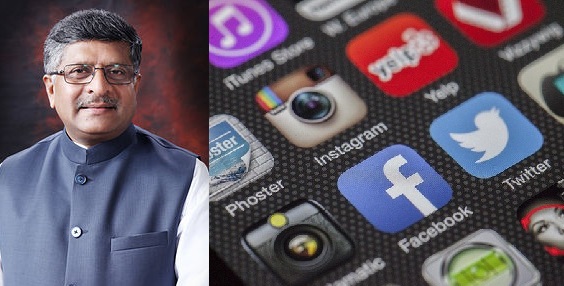The New Social Media Code, “Information Technology Intermediary Guidelines and Digital Media Ethics Code Rules,” was announced recently. The code is a joint effort of the Ministry of Electronics and Information Technology and the Ministry of Information Broadcasting. These are the guidelines for using social media (Whatsapp, YouTube, Facebook, Instagram, Twitter) and the OTT (Over the top) platform for entertainment.
- Reasons:
The rising number of users on all these platforms led to the need to framing these rules with the following reasons as listed by the government:
- The persistent spread of fake news.
- Rampant abuse of social media to share morphed images of women.
- Misuse for setting corporate rivalries in a blatantly unethical manner.
- Use of abusive language, defamatory and obscene content.
- Misuse by criminals and anti-national elements.
- No platform to register a complaint against such platforms.
- Lack of transparency.
- Brief History:
The Supreme Court ordered on 11/12/2018 in suo moto write that India’s Government may frame guidelines to eliminate child pornography, rape, and gangrape images and videos in hosting platforms and other applications.
In 2019, The Supreme Court directed the Ministry of Electronics and Information Technology to appraise the timeline to complete notifying new rules.
In Calling Attention Motion on 26/07/2018 in Rajya Sabha, the Minister resolved to strengthen the legal framework and make social media accountable after repeated demands from Members of Parliament to take corrective measures.
The Ad-hoc committee of Rajya Sabha laid its report on 13/02/2020 after studying the alarming issue of pornography on social media and its effect on children and society. It is recommended for enabling identification of the first origination of such contents.
- Features of the Guidelines:
- Social media to be administered by the Ministry of Electronics and Information technology and OTT by the Ministry of Information Broadcasting.
- There will be a Grievance Redressal Mechanism where the complaint will have to be acknowledged within 24 hours and resolved within 15 days.
- Ensuring online safety and dignity of the users, especially women users—intermediaries to remove or disable the access within 24 hours of receiving the complaint.
- Social media intermediary to appoint
(a) A Chief Compliance Officer
(b) Nodal Contact Person
(c) Resident Grievance Officer
All of these would be Indian residents
(d) Publish a monthly compliance report with details of complaints received and action taken as well details of the contents removed.
5. Significant social media intermediary to have a physical address in India published in the website and mobile application or both.
6. Voluntary user verification mechanism
7. Giving users an opportunity to be heard, informing them of the grounds and reasons for such action.
The OTTs have been urged to form a “self-regulatory mechanism.” The digital media is to observe Norms of Journalistic Conduct of the Press Council of India and the Programme Code under the Cable Television Networks Regulation Act.
There would also be a 3 level Grievance Redressal Mechanism with different levels of self-regulation:
Level 1: self-regulation by publishers
Level 2: self-regulation by self-regulating bodies of publishers
Level 3: Oversight mechanisms




